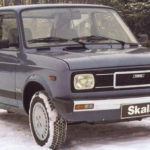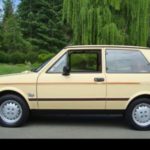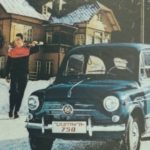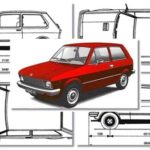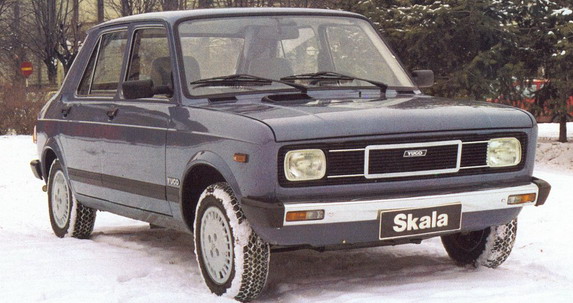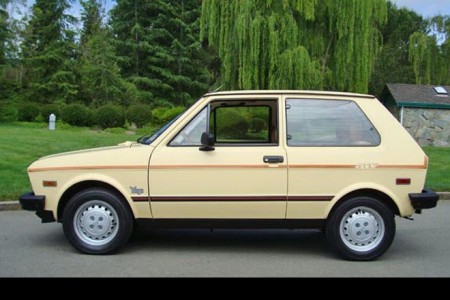How to Hairstyle Flag 101?

Zastava 101
Since this is a text about an old motoring car, instead of the modern word 'tuning', the word 'hair styling' will be used so that motorists of the generation of our fathers, who have watched and tried the Flags 101, can return to some nice, different times, and young motorists familiar with the not so long ago used terminology.
It is interesting that the way of playing with the Flag 101 has not changed, and the old term '' Cale, give some red for gasoline '' is still current (in the 100s '' red '' or '' horse '' was a XNUMX dinars note) .
When it hit the market in 1969, FIAT 128 was immediately included in the European rally sport and became a favorite, easy to style, and very manageable in all conditions. He was so popular as an "athlete" that classic Berlin was hairdressed in several design houses and made in series. All series were adorned with accessories in the sense of an instrument panel with an integrated tachometer and additional controls of engine parameters, sports steering wheels, striking alloy wheels, specially upholstered seats and lowered, reinforced, sports suspensions. Available versions were: Rally - 1290 cc engine with 65/73 hp, Moretti - with the same engine, but aesthetically modified, Giannini NP (1116 ccm with 66 hp), Giannini NP - S (1116 ccm with 76 hp with two carburetors) Weber 40 DCNF), Giannini NP - Rally (1290 ccm and 81.57 hp), Giannini NP - Rally 1600 (1580 ccm and 93 hp). Among the latest series were the FIAT 128 Sport - with 1116 cc engine of 64 hp and FIAT 128 ABARTH with 1290 cc of 73 hp. And the individual workshops got the maximum performance for the needs of sports competitions.
Parallel with Fiat 128, the Zastava 101 Rally was also being developed within Zastava Sport, where various modifications to the Zastava 101 for sports competitions in the country and abroad were made, modeled on Italian models. The bodywork is specially facilitated and reinforced, and horsepower is extracted from the engine. Unfortunately, Zastava Sport did not have the capacity to start mass production, and the particular reason was that the capacities for production of the basic model did not manage to produce enough vehicles to meet the demand of everyday customers.
On the other hand, according to research by Avto magazin during the 1116s, individual workshops extracted a maximum power of 120 cc of the engine to an incredible XNUMX hp - a power that launched little Stojadin, who was tested, by pressing the accelerator pedal like a rocket on test tracks.
The Red Flag institutes have participated with their cars in all major competitions such as the YU - rally, the Saturnus rally, the Tour d'Europe, the Monte Carlo rally (which still left a place for our Flag 101 in the historic class) and many others.
The aces of our rally sport, such as Bata Nadj, Jovica Palikovic, Joe Peric, achieved speed records in the class up to 1300 cubic meters and always praised Stojadin in interviews with Slovenian Auto Magazine as a good sports car in its class.
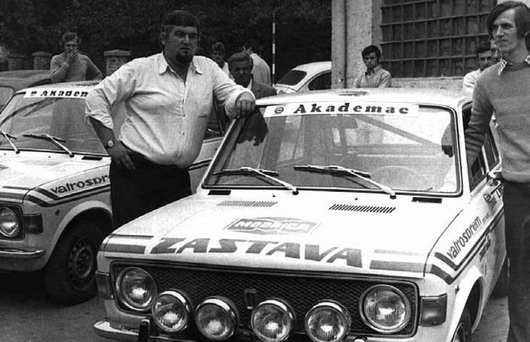
Zastava 101
Of the factory sports versions of the Zastava 101 (everyone had a common suction system with the Fiat 128 Rally - carburetor Weber 32/32 DMTR, intake manifold FIAT 128 AR, exhaust manifold 4-2-1), the strongest was the Zastava 101 Special 1300 (in France under the banner of Flag 1100 Nogaro It had Italian engines from FIAT 128 3p - 1290 ccm and 73 hp (FIAT 128 AC 000 mark), with Fiat 128 Rally instruments and Cromodora Abarth CD 57 wheels.
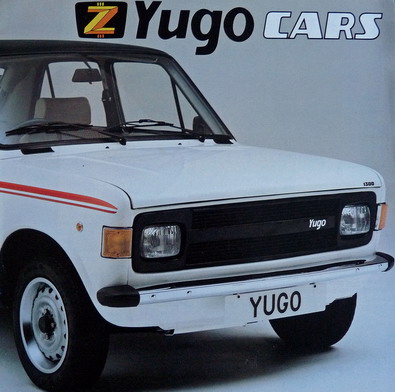
Special 1300 Britain
In the Stojadin class with the strongest engine, it was followed by the Mediterranean, SC and Confort - without any extra equipment.
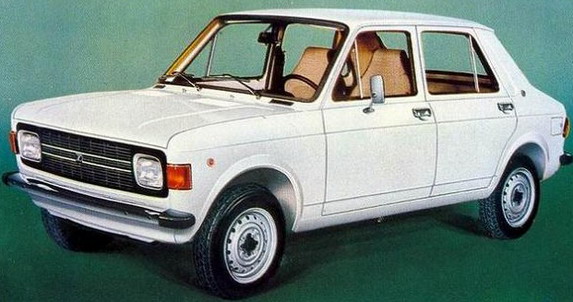
101 Super
The second factory sports car was the older model Zastava 101 Super (1977 - 1979) / Super Confort (1979 - 1981) with 1116 cc engine and 64 hp (on the French market called Zastava 1100 Contact with the engine from FIAT 128 Sport Coupe -1116 ccm (FIAT designation 128 A1 000) with characteristic Pilot seats and a gray plate of the standard instrument panel. It had a compression ratio of 9.2, intake and exhaust system from FIAT 128 Rally (carburetor Weber 32/32 DMTR, 4-2-1 exhaust manifold).
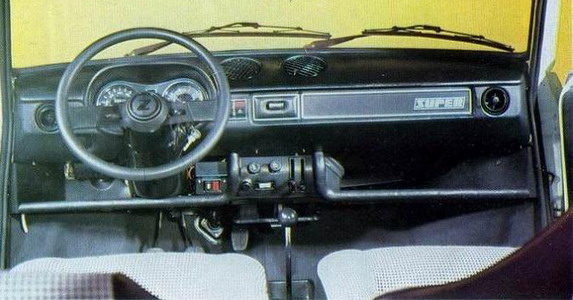
101 Super
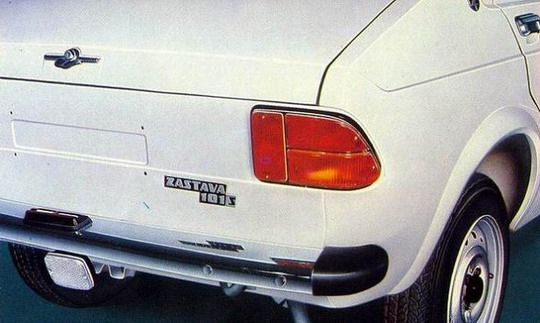
101 Super

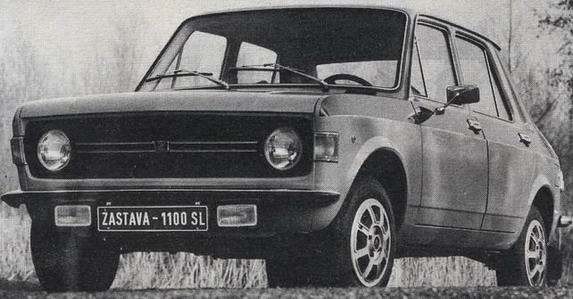
Flag 1100 FIG
Due to preparation for new models and production unification since the 1980s, factory sports models are slowly disappearing from the market, 1290cc engines are being replaced by new 1301 cc domestic production Ritmo engines (DMB 128A 6.064) but 65 hp. The flagship 101 Special became impoverished for the instrument panel and by 1983, when it completely disappeared from the market, it was almost impossible to buy. Zastava Sport is increasingly turning to the modifications of the new national class - the Yuga, so that 1983 can be taken as the end of the factory styling of the Zastava 101.
Factory athletes should mention that there were different versions of the Zastava 101 Special for different markets, including a frizzy Special that was intended for export to Western Europe with a 1301 cc engine and 90 hp (bearing the label 1300 Super 90), sport suspension , spoiler under the front bumper, sporty side lines and Cromodora CD 57 wheels.
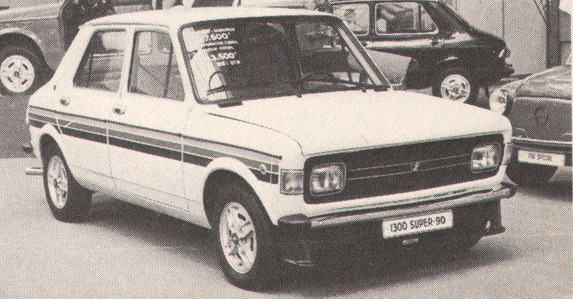
1300 Super 90
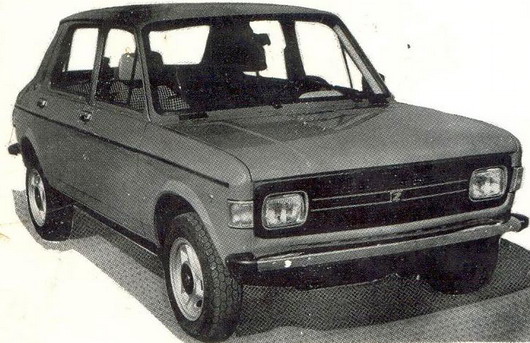
Special Netherlands
For the English market, the beautified Special was exported with a black, vinyl roof, side lines, chrome rings for the visual expansion of steel rims and other aesthetic enhancements.
Since the last generation of Stojadin in England, in the 513s, the model was labeled Yugo 1301 GL with 65 cc engine and XNUMX hp, sporty upholstered seats, spot stickers, sunroof and aluminum rims.
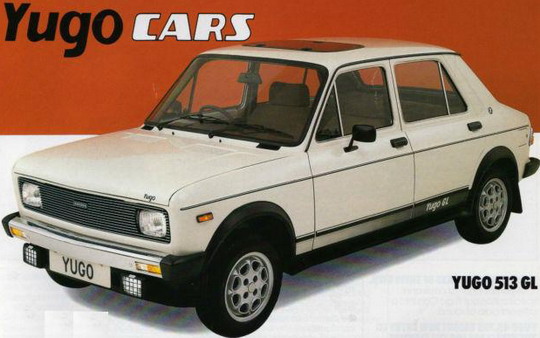
Yugo 513 GL
In the late 65s and early 101s, the beautiful Scale 1301 (the last factory sportsman) came out. Zastava 65 with 165 cc engine, 13 hp, with wide bumpers, lowered suspension, Energoinvest wheels - better known as 'Coral' (the only aluminum wheels made in Jajce) and XNUMX/XNUMX tires.
Even after the sanctions of the 65s, Scale 65 was still in production, but in aesthetics, except for the designation "Scale 101", it was no different from the usual Stojadin, however, until the end of production of Flag 2008, 65, Scale 101 did not was an easily accessible car and very difficult to reach. Fans jokingly say that these are models that were accidentally strayed by some surplus engine intended for the Zastava Automobile Specialty Factory Sombor, which still produces the flagship XNUMX T - Poly today.
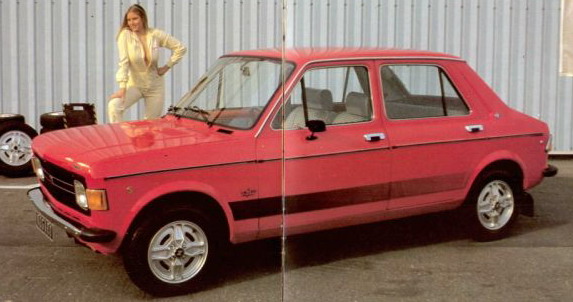
101 Nogaro Flag
To get a good haircut, it is necessary to have precise factory parameters first. The basis for hair styling has never been, nor will it ever be, an engine that has reached the end of its working life or, on the other hand, a good engine that is not at all set up for optimal, standard operation. Unfortunately, the weather has made its way, and a growing number of workshops with numbers are important for the precision styling of the Zastava 101 engine. Although almost 20 years have passed since its last publication and printing, the book "Zastava 101" by author and engineer Milorad Kondic and Djordja Coric, in the edition of the Technical Book, remains the best textbook for Zastava 101 drivers. A great deal of useful information can be found in the book, from engine adjustment parameters, through description of parts and assemblies, instructions for overhauling the engine and gearbox, catalog of frequently needed spare parts , through body, suspension, carburetion, cooling, power supply data until comparisons of different generations of the Flag 101, and as a crown, precise regular maintenance is stated.
When it was declared the car of the decade -1980, Zastava 101 was studied in detail for hairdressing through Yugoslav car magazines. Thus, the Slovenian Avto magazin wrote about a young engineer Zlak Franković who in 1974 developed a methodology for graduating from the Faculty of Mechanical Engineering, University of Belgrade, how to increase the power of the standard Zastava 101 with 1116 cc engine and standard 55 hp (the factory engine label at that time was FIAT 128A 000) at 75 hp, by lowering the cylinder head by 3 to a maximum of 5 mm, replacing the intake and exhaust valves, expanding and polishing the intake and exhaust ducts to 28 mm and modifying the exhaust pipe. The intake system was taken over from the Italian house Trivelato, and instead of a standard carburetor, Franković planned to install a Weber DCN vertical carburetor, a Weber 40 DCOE horizontal carburetor, or 4 separate Solex carburetors. The processing of the valves is planned so that their angles are 75-15-75 degrees, the ratio of the valve springs is 1: 3 mm. and as a crown, the replacement of the standard camshaft with a sports one marked 58-20-20-58 and 30-60-60-30. The motor supports must be reinforced during this hairdressing.
The best overview of hair styling methods was presented by engineers Sven Cverlek and Zlatko Kvočić for the magazine SAMogradnja in 1981. Each method was tested on a standard 1116 cc engine, 1977 generation, with 9.2 compression ratio, available in two versions: FIAT 128A 064 and DMB 128A 064. The main goal of the research is how to get maximum power without overhauling the cylinder and the cylinder head, and with on the other hand, Stojadin consumes the same or even less fuel.
After 1977, an IPM 101 MGV 32 carburetor with diffuser 10 and 21-4 exhaust manifold (one pipe is connected to the exhaust manifold) was factory-fitted to the standard Zastava 1 engine. According to SAM magazine testing, the factory engine had a power of only 50 hp. First, the simplest increase in power is to change the fuel nozzle in the carburetor, to put 1.17 mm instead of the factory 1.25.
The second step is to simply replace the carburetor IPM 32 MGV 10 with the diffuser 21 carburetor of the older generation Flag 101, namely IPM 32 MGV 1, Weber 32 ICEV 10, Holley Europe 32 ICEV 10 or Solex C 32 DISA 20 all with diffuser 24. According to SAM test , only then does the engine deliver 55 hp.
The third step is to replace the 4-1 exhaust manifold with a newer, 4-2-1 exhaust manifold (double pipe connected to the exhaust manifold), which was fitted as standard on the later models after the Flag 101 Super / SC and Special (since 1986), but on the carburetor with diffuser 24. According to the SAMa test, the engine power in that mode is 60 hp. Fuel consumption remained the same.
The fourth step is the replacement of the intake manifold and carburetor with a two-carb Weber 32/32 DMTR carburetor, which is factory-fitted to the Zastava 101 Super / SC and Special, according to the SAM test in combination with a 4-1 exhaust manifold, the engine gives a power of 63 hp, and with 4- With 2-1 exhaust, the engine delivers 66 hp. Fuel consumption is reduced when driving without opening another throat, which is felt by the sound of the engine and the accelerated resistance of the accelerator pedal.
The fifth step is the installation of two twin horizontal Weber 40 DCOE carburettors. According to the SAMa test in combination with a 4-1 exhaust manifold, the engine delivers 65 hp and, with a 4-2-1 exhaust manifold, the engine delivers 72 hp. But with a 5 degree setback.
It is a big misconception among young motorists that plastic spoilers screwed into non-standard seats will improve the aerodynamics of the Flag 101 and thus make it faster. The effect of disrupting factory lines is the opposite, reducing aerodynamics, creating air pockets, increasing vehicle weight, and thus reducing performance and increasing fuel consumption. The fact is that the Zastava 101 was a XNUMXs design and it was impossible to increase aerodynamics without precise engineering work.
One of the most important factors in styling the Flag 101 is the gearbox, ie. differential. The memory of the much faster '' Italians '' - the old Zastava 101 series, manufactured before 1979. In addition to the engine that had a stronger carburetor, the main credit for the cult status of this generation Stojadin deserves a gearbox with 13/53 transmission. at short '' speeds. This gearbox allowed the engine to spin at higher rpm and thus for more relief, so that the response to the accelerator pedal was significantly faster. Since 1980, the 17/64 gearbox with '' long '' gears, which has significantly reduced engine speed, provided higher top speed, reduced fuel consumption, but also 'oiled', has become increasingly common (with the Skala model fitted as standard). 1116 cc motor. However, with the 1301 cc engine, this transmission provided better performance and better acceleration, especially when styling. Nowadays, 13/53 gearboxes are massively sought after, serviced and resumed in the newer Stojadins.
Tire profile - younger Flag 101 drivers may also be mistaken for a wider tire profile to increase maximum speed, however this is not true. Each car is designed to depend on suspension, weight, wheelbase, etc. In the case of the Zastava 101, the wide tire profile increases the friction with the padding, which contributes to better handling in curves, but on the open road increases fuel consumption while reducing ultimate speed. The maximum tire profile that was fitted to the factory specs on the Zastava 101 Special was 165, 13 inches wide, the old recommendation is not to put a wider profile than the 101th on the Zastava 1116 with a 155cc engine. It is up to you to prioritize the performance of the Flag 101, so choose a tire profile based on that decision, but that profile must be followed by the wheel width - the wider the tire tread width, the wider the wheel, of course, to the limits of normal front wheel maneuvering. The wheel circumference must remain the same in order for the speedometer to show the correct speed.
The brakes are the most important part of the styled Flag 101 and it is these that are given the least attention, but they play a major role in the safety of road users. A frizzled engine must follow serious modifications to the brake system in terms of the quality of the brake lining, cooling methods, but also the increase in the diameter of the front discs. Most commonly used Florida parts are available and of sufficient quality to stop the Flag 101. If you have made the decision that you do not need a major modification and that your driving style can accompany the existing braking system, then overhaul the entire system using parts that higher quality and do not save money there.
Modern times of motoring have sent a lot of old but strong Fiat models to waste. So the Stojadins found very strong engines. The most common are 1301 cc engines from different generations of the Flag 101, but not uncommon are 1500 cc engines from the Fiat Regatta, 1400 cc engines from Florida, Uno Turbo engines and the like, which can be easily and almost without key modifications fitted to the Flag 101. If decide to style your car by replacing the engine, consult experts on how to strengthen the body in terms of reinforcing the engine mounts, mounting the cage in the passenger compartment, etc. Security must come first.
Members of the 101 Club Flag ( www.zastava101.serbianforum.info ) have tested different hairstyle methods and the ultimate conclusion is a complete positive transformation in driving. In the first place, a large reserve of power for risky overtaking, facilitated engine operation, noise reduction and fuel consumption, and secondly good fun in safe sporting driving with respect to traffic regulations and enjoy the sporty sound of the engine at high volume.
On this occasion, the Zastava 101 Club invites all young sports fans to visit our club, read the experiences of their older colleagues and be very careful in which direction they make modifications to their Zastava 101. A strong engine without strong brakes and an inexperienced driver can hurt many.
The flag 101 can be seen as a great toy, but the lives of road users will not be playing. Sometimes, every new Zastava vehicle was given a booklet of tips for new drivers, where the following fact was first stated (quotation from the book "Zastava - Tips for vehicle users", sixth edition, ZCZ - OOUR Zastava Kragujevac, print by Nikola Nikolič, Kragujevac, 1975. ): '' If a medium-sized and fully laden vehicle weighs about one tonne, it, at a speed of only 50 km / h, gathers energy that would be sufficient to lift the vehicle up to the third floor height in the event of a sudden stop. This energy rises by the square of the velocity (if the velocity increases twice - the energy rises fourfold) ''.
Text author: Novica Markovic - Flag 101 Club
Photos: Divisions Red Flag
Retrieved from: www.brzabrzina.com
Recommendation of similar texts:

Hi there, I am Mladen and I am an auto enthusiast. I started this blog years ago to help like minded people share information about latest cars, car servicing ideas, used car info, exotic cars, and auto technology. You will find helpful articles and videos on a wide variety of cars - Audi, Mercedes, Toyota, Porsche, Volvo, BMW and much more. Ping us if you have anything cool to share on latest cars or on how to make older cars more efficient, or just want to say hi!


